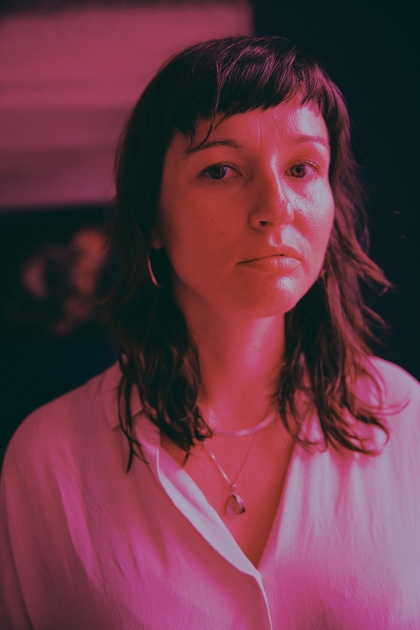Lauren Moffatt makes immersive environments using experimental approaches and narrative structures. She investigates the connections between physical and virtual spaces and bodies. Here, she is especially interested in the blurred boundary between digital and organic life. The artist works with a mix of traditional, obsolete, and pioneering technologies. These combinations lead to speculative fictions whose origins can often be found under real circumstances. Lauren Moffatt is interested in creating new worlds that can be populated by outsiders and loners.
Lauren Moffatt studied painting, the theory and practice of new media art, and audiovisual art at the University of Fine Arts (AU), the Université Paris VIII (FR) and at Le Fresnoy Studio National des Arts Contemporains (FR). In 2022 Moffat was honored by the Certamen Internacional de Arte Digital (ES) and is the recipient of the Revista MAKMA Prize (ES); in 2021 she was awarded first prize at the first VR ART PRIZE of the DKB in cooperation mit CAA Berlin (DE). Lauren Moffatt’s work has been exhibited internationally at the Zabludowicz Collection (UK), Octobre Numerique (FR), La Gaïté Lyrique (FR), SXSW (US), the Haus am Lützowplatz (DE), the UNSW Galleries (AU), the Daegu Art Museum (KOR), Le Grand Palais Ephémère (FR), SAVVY Contemporary (DE), FACT Liverpool (UK), The Sundance Film Festival (US), ZKM (DE), Q21 Freiraum (AT) and at the Hartware MedienkunstVerein (DE). She divides her time between Berlin and Valencia.
© Portrait Lauren Moffatt by David Zarzoso
